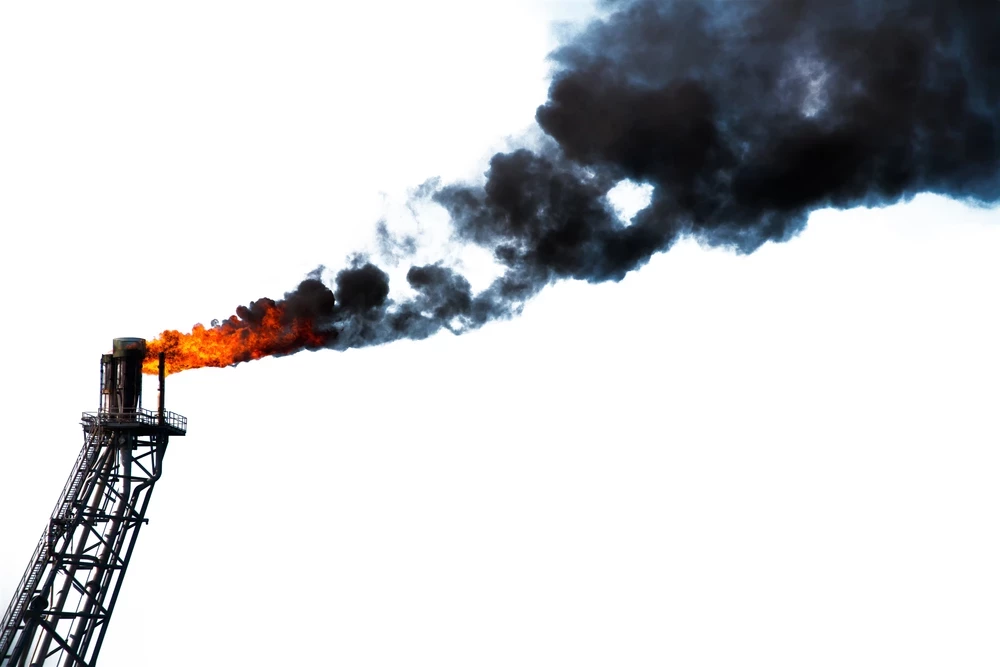What is fracking?
Your need-to-know guide to the controversial process
Add bookmarkFracking: what exactly is it?
Fracking is a term that refers to the process of hydraulic fracturing, wherein a mix of sand, chemicals, and water – often referred to as fracking fluid – are injected into the rock at the base of a drilled well. The fluid can be injected along the rock layers or vertically through the earth, and is intended to create additional routes to further gas reserves. Gas is released from these exploited fissures in shale rock, and can then escape up through the well before being captured at the well head.
With vertical drilling and fracking, the simplest but less common form of hydraulic fracking, a single drilling pad creates a several thousand metre deep hole and then releases the fracking fluid. The fluid then exploits horizontal veins in the shale formation. Horizontal drilling involves a 90-degree turn at the bottom of the well, before releasing the fracking fluid at multiple points along this horizontal pipe.
See also: Is fracking a dirty word?
Over 98 per cent of fracking fluid is water, with quartz sand and chemical additives making up the rest. The chemicals in the mixture include viscosity-increasing agents to better hold the solid particles of sand in solution, foaming chemicals to aid transportation of sand particles, and acids to aid erosion. The sand particles hold open fissures to increase the amount of gas that can escape once the fluid has been injected.
Common concerns with fracking
As well as being unusual to many people who live in places that do not regularly drilling for onshore oil, the very terminology of fracking can be intimidating to the uninitiated. However, there are a number of very real concerns that need addressing in any discussion of the hydraulic fracturing process - despite publications such as The Guardian newspaper assuring us that fracking isn't always bad.
"there is nothing inherently bad about fracking, or hydraulic fracturing. The technique is a way of extracting natural gas, which is mostly methane, from shale rock formations that are often deep underground"
Firstly, many gases, and chemicals such as mercury, can escape from the shale when being fracked with acidic fluid. Methane, a potent greenhouse gas, is also released in vast amounts, and is the main component of the natural gas being drilled for.
You might be interested in our introduction to the oil and gas industry.
Secondly, a vast amount of water is used during the fracking process – nearly 10 million gallons per well – all of which can become contaminated as it passes through thousands of metres of earth on its way to the hydrofrac zone. This water can also erode the concrete at the top of the well, and contaminate ground water from above.
Richard Prince, Brav Conflict Management
"The locations where I worked seemed to do a good job of containment of the flow back fluid - storing it in lined reservoirs or piping it to storage or injector tanks. Our company had its own reservoir crew that would go out to the sites and make these lined reservoirs prior the drilling of some wells. Other wells required us to go out first and lay not only the methane pipe but also a water pipe right next to it for the transportation of the water to a tank. These tanks would either store the water that would then be trucked out or they would inject the water back into the ground."
The third, and most infamous, problem with fracking is that of seismic activity – low-magnitude tremors as a result of the forced changes to the balance of sub-surface rock formations. It is these issues that make fracking a frequent headline, particularly in the UK.
Fracking in numbers
Fracking has been explored in the UK as a way in which to boost domestic natural gas production, and reduce imports. However, more than 6,000 wells would be needed to reduce imports by 50 per cent. Fracking as we now understand it, and as the US is now using on a massive scale, is a relatively-new phenomena in the UK – but fracking has been occurring for decades.
Why not read our piece on fracking in the UK?
Nodding donkeys, used to extract oil after a fracking process, are not an uncommon sight in the English Midlands, but these wells are nowhere near as deep or as productive as those drilled in the US, or by companies such as Cuadrilla in the UK. There are currently 2,152 wells on UK soil, and 200 of them have been fracked, but only England remains open for new fracking business – with bans effective in every other British nation.
The US Environmental Protection Agency found evidence that fracking can effect drinking water when spills during handling result in chemicals in groundwater supplies, when injection of fluids passes into groundwater, and when wastewater is disposed of in unlined pits.
The US is the global leader in fracking, accounting for half of US output across over 300,000 wells. Significant shale oil and gas reserves have been identified in Russia, China, and Argentina – and all three nations have shown a willingness to embrace the process.
The Chinese government currently offers tax benefits and subsidies for fracking, but the numbers are not yet clear. In Argentina, by contrast, there are over 150 wells in operation, with many hoping that a fracking boom may help relieve some of the country’s financial pressures. Russia, despite over-producing in recent years, has now claimed to have invented a new fracking technology that could increase production sixfold.
Fracking case studies
Like its European neighbours France, Belgium, and Germany – the UK has always been wary of fracking. Despite frequent fracturing operations in the North Sea fields during the 1970s, since 1980 only around 200 onshore wells have been sunk. However, the first onshore shale gas wells were only proposed in 2007. In 2011, Cuadrilla Resources performed the first hydraulic fracking job in the UK – only to be indefinitely suspended within the year.
In 2018, Cuadrilla received permission to recommence fracking operations in the UK, only to be continually beset by suspensions and ‘pauses’ due to tremors above the 0.5 magnitude safety limit. Since its controversial suspension of activity in 2011, Lancashire-based Cuadrilla has become synonymous with two things: fracking and earthquakes.
Despite the almost constant negative press in Western Europe, the American case for fracking is far more balanced. Fracking in states such as North Dakota, which has experienced a population surge of over 80,000 because of opportunities in shale oil and gas, and then the resulting slump of 2014, has produced over $36 billion in shale gas alone.
Richard Prince, Brav Conflict Management
The work of determining the safety of these practices needs to continue. If countries such as the US were to stop fracking, it would mean a serious reduction to oil and gas production. This could have huge impacts on the economy and it would also put a lot of people out of work. however, the safety of our people, cities, and states should be the ultimate priority for everyone.
One of the major benefits to fracking is that it has driven down the price of natural gas, and thus positioned gas as a viable fossil fuel alternative to coal. There has also been a study led by researchers from Yale that refutes claims that fracking contaminates water aquifers.
Market and outlook
The fracking market is now bigger than ever, with the US market alone valued at just shy of $10 billion. The global market is now estimated to have exceeded $72 billion. The market for fracking fluids was valued at $26.68 billion in 2017, and is expected to reach over $80 billion in the next six years. However, with many exploration budgets exhausted, and oil prices slumping, fracking may struggle to meet those figures as investors move to cheaper means of drilling wells.
Following comments from Schlumberger about how serious the US slowdown has been in recent weeks, UK-based oilfield service companies are experiencing knock-on effects.
"According to industry-reported data in the FracFocus database, oil and gas wells fracked across the U.S. between 2005 and 2015 used at least 5 billion pounds of hydrochloric acid, 1.2 billion pounds of petroleum distillates, and 445 million pounds of methanol"
The UK market is all but on hold as Cuadrilla awaits yet another decision regarding its future in England, following their largest fracking-related tremor to date. There have been nearly 50 minor earthquakes since operations began in October, but despite this, Cuadrilla is claiming to be on track to complete its fracking operation by the end of the year.
For more information on Richard, please visit www.brav.org.
If you enjoyed reading this guide, work in this field, or have some opinions on the subject - please let us know by contacting the editor on tom.stuchfield@iqpc.com.



















